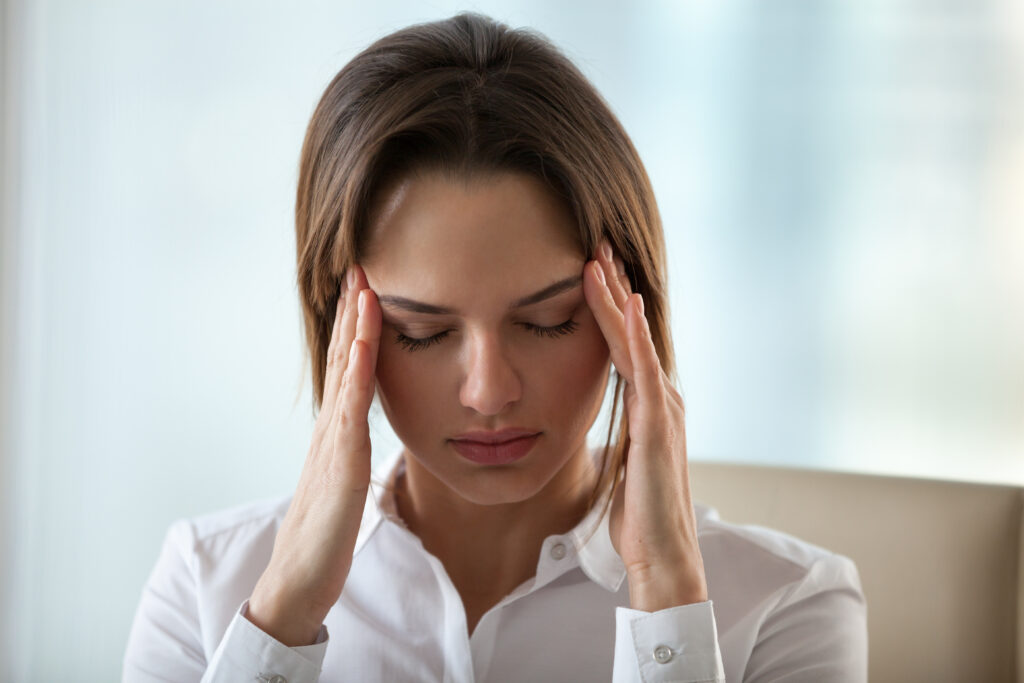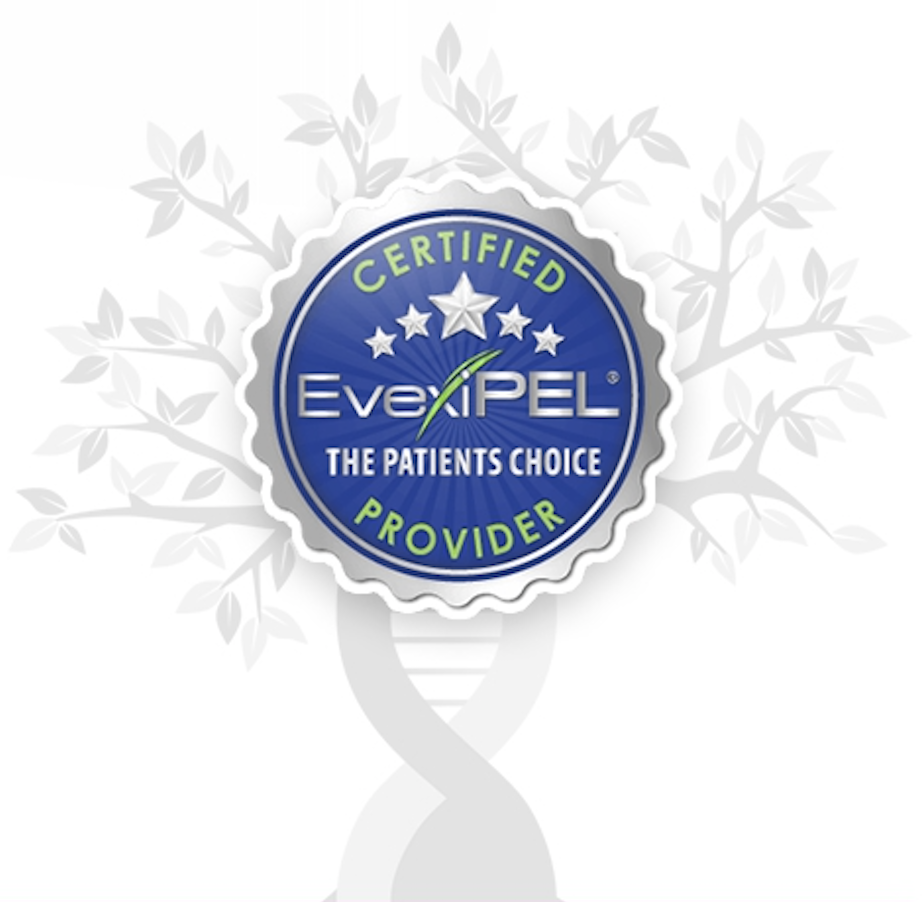As women age, they produce less reproductive hormones (estrogen, progesterone, and testosterone) over time, which can lead to a variety of health issues. Many women suffer from symptoms such as hot flashes, incontinence, sexual dysfunction, insomnia, mood disorders and more, due to hormone imbalance.
Thyroid dysfunction is another misunderstood and often misdiagnosed hormone disorder that plagues many women, who may suffer from fatigue, weight gain, depression and hair loss, among other symptoms.
Of the many treatment options available, hormone replacement therapy for women, also known as HRT, stands out as a way to restore female hormones to optimum levels in the body. Healthcare professionals recommend this treatment for women who experience symptoms or conditions related to imbalanced sex hormones (estrogen, progesterone, or testosterone) or thyroid disorders.

Hormone replacement therapy (HRT) is a therapy designed to restore hormones to optimum levels in the body. This treatment is recommended for women who are experiencing symptoms or conditions related to imbalanced sex hormones (estrogen, progesterone and/or testosterone) or thyroid disorders.
To find out if you are a candidate for HRT, schedule a consultation with one of our trained practitioners who specializes in hormone therapy. Your practitioner will assess your current health and medical history, review symptoms and goals, and perform lab tests to develop a comprehensive treatment plan to restore hormone balance. At EVEXIAS, treatment may include pellet therapy, nutraceuticals, diet and exercise plans, and more.
When considering hormone replacement therapy (HRT) or estrogen therapy, it’s vital that you understand what you’re getting yourself into. As such, you may experience one or more of the following benefits by starting your HRT journey with EVEXIAS Medical Centers:

The human body requires around 50 scientifically identified hormones to function properly. These hormones originate in the endocrine system, produced by tissues and glands to facilitate the movement of vital compounds throughout the body. Should your body produce less or more of one or more of those hormones, you could experience hormonal imbalance symptoms.
Many menopause symptoms are similar to those experienced during menopause. Common perimenopause symptoms include:
EVEXIAS Medical Centers utilize various methods to diagnose hormone imbalances in women. Certified health practitioners assess symptoms, challenges, and health goals during consultations. Additionally, a series of lab tests is conducted to evaluate hormone levels and other key health markers.
When considering hormone replacement therapy (HRT) or estrogen therapy, it’s vital that you understand what you’re getting yourself into. As such, you may experience one or more of the following benefits by starting your HRT journey with EVEXIAS Medical Centers:

What you might not know about HRT is that there are several types of treatment options. It is important to consider these different methods to ensure that your treatment is seamless, fits your lifestyle, and achieves optimal results during each treatment cycle.
Topical hormone replacement therapy (HRT) includes creams and gels, which are popular because they are both simple to use and discreet. However, this delivery method comes with some risks. Hormone creams and gels may transfer from one person to another through contact with the treatment area.
This potential contact exposes kids, pets, and partners to the therapy, which could impact their health. Creams and gels also require application up to two times daily. And skipping a dose because you run out or forget hinders the effectiveness of the treatment.
It is also challenging to measure each dose and ensure that the exact amount is absorbed into the skin, further impacting consistent and effective relief.
Oral hormone replacement therapy (HRT) pills are another common treatment method. Pills allow for precise dosing and travel easily. But much like creams and gels, they can be inconvenient.
Patients taking oral HRT must remember to take their prescription precisely as prescribed; otherwise, they risk impacting their treatment.
Furthermore, pills have to compete with the harsh environment of the gut. While the GI tract can effectively absorb most pills, oral HRT does not offer the consistency other delivery methods achieve.
Patches offer the convenience of “set it and forget it,” but a bulky patch is hardly forgettable.
Only certain areas of the body are suitable for patches, and they are not always discreet, especially in warm-weather clothing.
Patches also don’t adhere well to water-exposed skin or certain fabrics. If an estrogen patch partially or entirely falls off, you could impact your treatment.
Steady dosing is also tricky with patches because the concentration of each hormone in the patch declines toward the end of the treatment cycle, leading to the return of unwanted symptoms until a new patch is applied.
Patches offer the convenience of “set it and forget it,” but a bulky patch is hardly forgettable.
Only certain areas of the body are suitable for patches, and they are not always discreet, especially in warm-weather clothing.
Patches also don’t adhere well to water-exposed skin or certain fabrics. If an estrogen patch partially or entirely falls off, you could impact your treatment.
Steady dosing is also tricky with patches because the concentration of each hormone in the patch declines toward the end of the treatment cycle, leading to the return of unwanted symptoms until a new patch is applied.
At EVEXIAS, we use a variety of methods to diagnose hormone imbalances in women. During a consultation, our health practitioners review the patient’s symptoms, challenges, and health goals. A series of lab tests will also be performed to analyze the patient’s hormone levels, along with other health markers.
Based on lab results and the patient interview, a diagnosis will be made and a treatment plan recommended to help the patient achieve optimum health.
Hormone imbalances may be treated with hormone therapy, nutraceuticals, and a balanced, healthy lifestyle that includes regular exercise, proper nutrition, and maintaining a healthy weight. When hormone levels are optimized, women experience increased energy, improved mood and libido, quality sleep, and other benefits that make it easier to enjoy a higher quality of life.

Hormone replacement therapy can address these problems whether you are a man or a woman. This therapy is designed to supplement the body with the hormones that your body is currently lacking.
That way, the body should function better, and the negative effects of this health problem should become less of an issue.
What you might not know about HRT is that there are several types of delivery methods you can consider.
It is important to consider these different methods to ensure that your treatment is seamless: fits your lifestyle and achieves optimal results during each treatment cycle.
Creams and gels are a common method of hormone therapy because they both simple to use and discreet.
However, this delivery method comes with some risks. Hormone creams and gels may transfer from one person to another through contact with the area where the cream was applied. This exposes kids, pets, and partners to the therapy and can impact their health.
Creams and gels also require application one to two times daily. If you skip a dose because you run out or forget, you can hinder the effectiveness of the treatment. It can also be difficult measure each dose and ensure that the exact amount is absorbed into the skin further impacting consistent and effective relief.
Pills are also a common method of hormone therapy. Pills allow for precise dosing and travel easily. However, much like creams and gels, they can be inconvenient.
Most pills have to be taken at least once a day, depending on the prescription. If you skip a dose, your treatment may be impacted. Furthermore, pills have to compete with the harsh environment of the gut. While most pills are designed to be effectively absorbed as they travel through your GI tract, this delivery method does not offer the consistency achieved by other delivery methods.
Patches offer the convenience of “set it and forget it,” but a bulky patch is hardly forgettable.
Patches may only be placed on certain areas of the body that are not always discreet in certain clothing.
Not to mention that patches do not adhere well when coming in contact with water or certain fabrics. If a patch falls partially or completely off, your treatment will be impacted.
Steady dosing is difficult with patches as well because the volume of hormone in the patch declines toward the end of the treatment cycle, leading to the return of unwanted symptoms until a new patch is applied.
Injections are a particularly popular method of testosterone therapy. Injections enter the bloodstream directly and therefore absorption is highly effective. However, injections must be administered every 7 to 10 days. If you skip or delay a dose, your treatment may be impacted.
Injections notoriously cause a rollercoaster dosing effect. Most patients that choose injections will experience a surge of hormones in the days after the injection followed by significant declines each day until the next injection. This can make symptom relief short-lived.
Injections are also associated with discomfort, inflammation, bruising, bleeding or pain at the injection site.
Pellets are the preferred method of hormone replacement therapy and have grown in popularity over the last decade.
For most people pellets offer a convenience that is unparalleled. Pellets are placed under the skin during a short medical visit and deliver a steady dose of hormone for 3 to 6 months based on your level cardiac output, gender, and dose.
You don’t have to remember to apply a cream, take a pill or hassle with painful injections.
This method of delivery also most closely mimics the body’s natural secretion of hormones–delivering timely and steady dosing for optimal function.
If you believe you are experiencing a hormone imbalance, schedule a consultation with the qualified experts of EVEXIAS Medical Centers. Each practitioner is highly trained in hormone health and balance, including the renowned EvexiPEL Method, founded by Dr. Terri DeNeui.
After years of practicing HRT, Dr. DeNeui sought to eliminate the most common side effects of pellet therapy. She developed the EvexiPEL Method to support reduced inflammation, pain, and scar tissue at the insertion site. The EvexiPEL Method strategically places the pellet to improve and deliver steady dosing throughout the entire treatment cycle.
Schedule an appointment today with EVEXIAS Medical Centers to address your symptoms of hormone imbalance and rediscover your health and self again.
